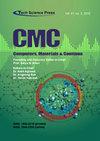数字彩色图像的有效伪造检测方法
IF 1.7
4区 计算机科学
Q3 COMPUTER SCIENCE, INFORMATION SYSTEMS
引用次数: 0
摘要
本文研究了图像处理中的一个重要课题:彩色图像伪造检测。随着计算能力的发展,对网络上传输的信号、图像和数据的黑客攻击和伪造攻击取得了突破。因此,迫切需要开发高效的图像伪造检测算法。本文考虑了两种主要的伪造类型:拼接和复制移动。拼接是通过将图像的一部分插入另一个图像来执行的。另一方面,复制-移动伪造是通过将图像的一部分复制到同一图像的另一个位置来执行的。提出的拼接检测方法是基于原始图像和篡改图像之间的照度不同的假设。为了检测原始图像和篡改图像之间的差异,同态变换将光照分量和反射分量分离开来。利用照度直方图导数来检测照度差异,从而实现伪造检测。在进行伪造检测之前,引入了一些预处理技术,包括直方图均衡化、直方图匹配、高通滤波、同态增强和单图像超分辨率,以增强原始部分和嵌入部分之间的细节和变化。提出的复制-移动伪造检测方法采用加速鲁棒特征(SURF)算法,该算法提取特征点和特征向量。通过欧几里得距离匹配和分层聚类实现对复制分区的搜索。此外,SURF算法还采用了直方图均衡化和单图像超分辨率等预处理方法。仿真结果证明了该预处理步骤分别用于拼接和复制-移动伪造检测的同态检测和SURF检测算法的可行性和鲁棒性。本文章由计算机程序翻译,如有差异,请以英文原文为准。
Efficient Forgery Detection Approaches for Digital Color Images
: This paper is concerned with a vital topic in image processing: color image forgery detection. The development of computing capabilities has led to a breakthrough in hacking and forgery attacks on signal, image, and data communicated over networks. Hence, there is an urgent need for developing efficient image forgery detection algorithms. Two main types of forgery are considered in this paper: splicing and copy-move. Splicing is performed by inserting a part of an image into another image. On the other hand, copy-move forgery is performed by copying a part of the image into another position in the same image. The proposed approach for splicing detection is based on the assumption that illumination between the original and tampered images is different. To detect the difference between the original and tampered images, the homomorphic transform separates the illumination component from the reflectance component. The illumination histogram derivative is used for detecting the difference in illumination, and hence forgery detection is accomplished. Prior to performing the forgery detection process, some pre-processing techniques, including histogram equalization, histogram matching, high-pass filtering, homomorphic enhancement, and single image super-resolution, are introduced to reinforce the details and changes between the original and embedded sections. The proposed approach for copy-move forgery detection is performed with the Speeded Up Robust Features (SURF) algorithm, which extracts feature points and feature vectors. Searching for the copied partition is accomplished through matching with Euclidian distance and hierarchical clustering. In addition, some preprocessing methods are used with the SURF algorithm, such as histogram equalization and single-mage super-resolution. Simulation results proved the feasibility and the robustness of the pre-processing step in homomorphic detection and SURF detection algorithms for splicing and copy-move forgery detection, respectively.
求助全文
通过发布文献求助,成功后即可免费获取论文全文。
去求助
来源期刊

Cmc-computers Materials & Continua
工程技术-材料科学:综合
CiteScore
5.30
自引率
19.40%
发文量
345
审稿时长
1 months
期刊介绍:
This journal publishes original research papers in the areas of computer networks, artificial intelligence, big data management, software engineering, multimedia, cyber security, internet of things, materials genome, integrated materials science, data analysis, modeling, and engineering of designing and manufacturing of modern functional and multifunctional materials.
Novel high performance computing methods, big data analysis, and artificial intelligence that advance material technologies are especially welcome.
 求助内容:
求助内容: 应助结果提醒方式:
应助结果提醒方式:


